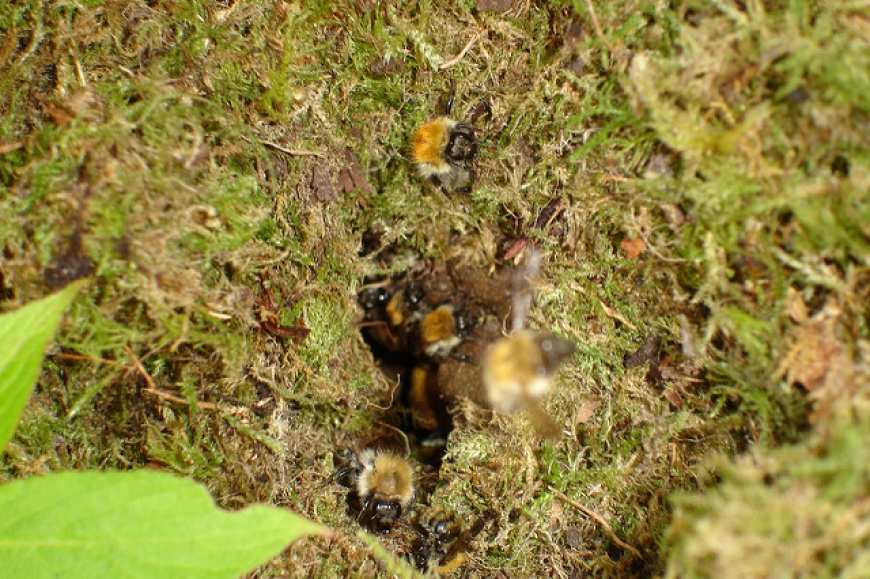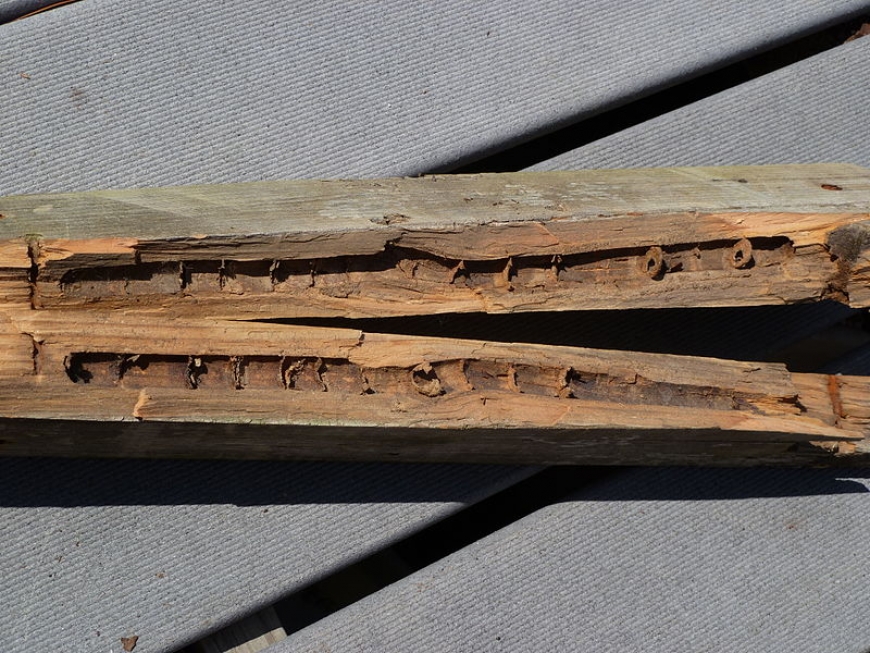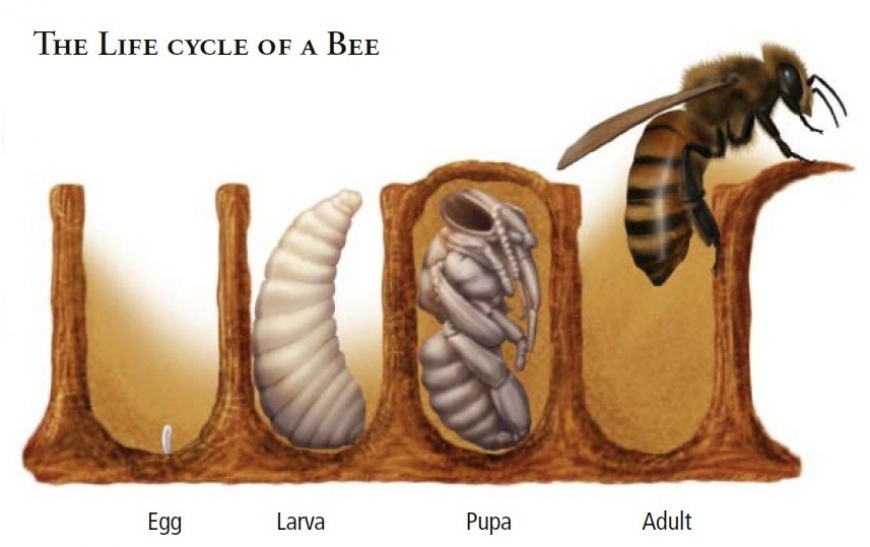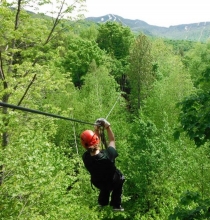


Bumblebees nest in the ground during the winter. Photo: Craig Chambers, Flickr Creative Commons
True to their name, carpenter bee larvae spend the winter in wood. These are carpenter bee galleries in a split 2x4. Photo: Creative Commons Belchergb
A honeybee life cycle. Photo: NASA



The Secret Lives of Bees in Winter
The winter weather may have taken its time getting here this year, but I think we can agree that the North Country has once again been transformed into the icy, frigid landscape we have come to know and love (or at the very least, tolerate begrudgingly).
With snow covering the ground, ice coating our walkways, and Jack Frost nipping at our noses, agricultural pollinators are probably the last things on our minds. However, for the dedicated enthusiasts among us, one question remains: where are the bees?
In warmer climates, flower resources are available year-round. Hence bees and many other pollinators remain active throughout the year. However, in colder climates—such as the North Country—bees must seek refuge from the weather and conserve their energy until flowers are once again blooming in the spring.
There are two different strategies employed by bees to survive the winter months. Which strategy a species employs depends on its sociality, i.e. the extent to which individuals of the same species congregate and cluster together. There are varying degrees of sociality in bees, ranging from eusociality—where the bees live communally in highly organized colonies—to solitary bee species which construct individual nests in which their offspring hibernate either as mature adults or as larvae.
In the winter, eusocial species—including honeybees—utilize clustering in their hives. Worker bees huddle together to surround the queen, fluttering their wings and shivering to elevate the temperature of the hive. Honeybees feed on their honey stores to sustain themselves throughout the winter and are capable of maintaining a core cluster temperature ranging from 40°F to as high as 95°F.
Bumblebees are also eusocial, but instead of clustering, only the numerous queens produced in the last brood of the summer colony survive the winter by hibernating in ground nests after they mate.
Although the well-known bumblebees and honeybees are eusocial, approximately three-fourths of the bee species native to this region are solitary nest-building bees. In solitary bee species, after mating, the female bee locates, prepares, and provisions her nest in a completely individual undertaking. Nest construction can vary widely among species, but the majority of species nest in the ground, in wood, or in hollow plant stems.
Within the nest, the female bee creates one or more brood cells, which are sectioned-off compartments where the female bee lays her eggs. These compartments are provisioned with a mixture of nectar and pollen known as “bee bread.” Additionally, in order to protect the larvae from desiccation, excess moisture, fungi, and disease, the brood cells are usually lined with collected materials such as leaf pieces, wood fibers, and soil or with abdominal secretions depending on the behavior of the species.
Once the brood cells have been prepared and provisioned, the female bee seals the nest entrance and leaves—typically surviving for several more weeks in which she may build additional nests. Meanwhile, the larvae hatches and develops within the brood cell while feeding on the bee bread. The length of development varies, with some species overwintering in the dormant stage of development between hatching and adulthood known as a prepupa. Other species complete development in the fall and overwinter as fully formed, dormant adults.
The emergence of adult bees is triggered by environmental factors such as moisture level and temperature in order to coincide with the blooming of flowers for forage. Unlike us, bees are not able to seek respite from the cold in heated buildings or throw on a multitude of layers to brave the cold. Therefore, their nesting sites are of the utmost importance to their survival.
While the opportunity for nesting site creation and enhancement has long since passed for this North Country winter, going forward there are some simple actions one can take to significantly increase nesting opportunities for native bee species:
1. Leave some ground bare (e.g. don’t cover all bare ground with bark chips or mulch)—especially on sunny areas and south-facing slopes.
2. If possible, leave dead trees alone as these provide ideal nesting sites for wood-nesting species.
3. Leave the hollow, pithy stems of shrubs like sumac and raspberry intact in your garden rather than pruning to the ground—or, at the very least, leave the discarded stems in a corner of the garden where they can be easily accessed by bees.
4. Maximize areas of undisturbed, untilled ground—ideal for ground-nesting bees.
5. Drill holes in stumps and dead trees around your property to encourage wood-nesting bees.
6. Consider creating homemade bee blocks from scrap lumber (see the Chicago Botanic Garden website for details: http://www.chicagobotanic.org/plantinfo/building_bee_nesting_block).
Ultimately, increasing the number and variety of nesting opportunities and sites for native bee species in the North Country has the potential to help increase the population and diversity of native bee pollinators, contributing to a more robust, resilient, and ecologically/economically beneficial bee community.
These bee communities, although dormant for the time being, will once again emerge from their nests come springtime to carry out their vital role as pollinators. For now, as we struggle ourselves to stay warm in this North Country winter, the most we can do is to think of these bees buried under the ground, nestled in tree stumps, or holed up in plant stems, waiting, like the rest of us, for warmer days.


I've pondered this same question many times and enjoy your clear answer!